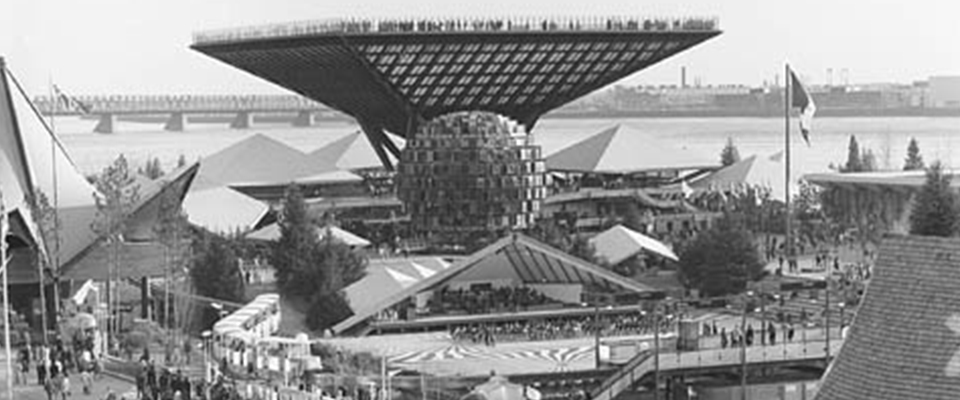I’m curious about how disinterested Canadians appear to be about our 150th birthday. The last big landmark bash was a celebratory explosion of optimism and good cheer accompanied by an outpouring of artistic expression. Expo 67 opened on April 27, 1967. It brought the world to Montreal and opened our eyes to the possibility of making Canada a great nation.
Travelling to Expo 67 in Montreal was the most exciting trip for a sixteen- year-old girl like me, who hadn’t seen much of anything and hadn’t thought about her country’s standing in the world.
Canada’s 150th birthday is different. Those of us who were in our teens in 1967 are older adults. We’re either wiser, more generous, more empathetic or just the opposite. Most of us are retired, or semi-retired. We’ve experienced the ups and downs of life and have stories to tell and secrets to hide. On the whole we’ve been the luckiest of generations, due in part to those who came before us and shaped a Canada that stands as a democratic model for the world.
As we approach July 1, 2017, I’m thinking about who I’d like to have for dinner for the 150th, and although I can name many current friends, I’ve decided to stretch my imagination to those who are no longer with us, but left an indelible mark on Canada. They are Canadians who might help us to see our way through darker times and into a brighter future.
My three ghosts from Canada Days past are the writer Lucy Maud Montgomery’s character Anne Shirley, the painter Tom Thomson, and the father of Confederation Sir John A. Macdonald. All three have taken hold of my imagination for at least 50 years.
The Anne mini-series which recently made its premier on the CBC still holds the same bittersweet fascination it did for me when I received Montgomery’s first Anne of Green Gables book for my ninth birthday. “Kindred spirits,” is the term Anne uses for friends she counts on, who understand her, who see the world through a similar curved lens, one of both merriment and of disappointment. “Depths of despair” is the phrase she uses when her best laid plans go wrong, as they often do for Anne.
Anne remains the quintessential Canadian girl, the carrot-topped, freckle-faced orphan, who brings joy and anguish to the aging sister and brother Marilla and Matthew Cuthbert on their bucolic PEI farm. She is a good girl, but she is also mischievous and willful. In her recent incarnation, Globe and Mail critic John Doyle comments, “There is such fierce, uninhibitedly direct longing and defiance in this Anne.”
Across the globe, since the first Anne book was published in 1908, Anne Shirley has inspired people in trouble. As the CBC series launches on Netflix, two articles appeared in The New York Times, where it was pointed out that “Polish resistance fighters took “Green Gables” with them to the front; the novel became a part of the Japanese school curriculum in the orphan-filled postwar 1950s.”
More than 50-million copies of the book have sold worldwide. Anne of Green Gables has been translated into 36 languages.
More recently, an article in The Atlantic said this:
“Returning to the book after a few decades’ absence, though, I was surprised at the bleakness of Montgomery’s early chapters. When Matthew is astonished to find that Anne’s a girl instead of the boy he requested, a station-master quips, “Maybe they were out of boys of the brand that you wanted,” as if Matthew were shopping for toilet paper at Target rather than rescuing a child. After Anne learns that she might not be being adopted after all, Montgomery describes how, “upstairs in the east gable, a lonely, heart-hungry, friendless child cried herself to sleep.” And Anne, who could talk an inanimate object into madness, becomes suddenly quiet when Marilla asks to hear her history. “Evidently,” Montgomery writes, “she did not like talking about her experiences in a world that had not wanted her.’”
Somewhere buried deep inside, lives the character of Anne, who almost singlehandedly brought me into the world of books and literature. I’ve never forgotten her exuberance, her intelligence, and her endurance. Anne is resilient. She is the girl, for so many of us, now in our sixties and older, who we keep close, a memory of our innocent selves rising above the bleak realities of experience.
As for Tom Thomson, I discovered him at eighteen years old, browsing the Canadian wing of the National Gallery in Ottawa. Back in 1970, the Gallery was housed in an ugly old office building off Elgin Street, but I didn’t care. The collection was small, but the paintings of the Group of Seven soared above the rest.
Tom Thomson’s interpretations of the Canada wilderness changed the way generations of Canadian find their place in the landscape. Travelling by train, skating down a frozen river, or canoeing across a rough watered Northern lake, the imprint of Thomson’s artistic vision lives in our mind’s eye. It’s a love affair with a powerful landscape where people are less majestic than nature.
The third ghost is Sir John A. Macdonald, the first Prime Minister of Canada and the politician with the vision of uniting this vast, unruly country.
“In 1864, when no party proved capable of governing for long, Macdonald agreed to a proposal from his political rival, George Brown, that the parties unite in a Great Coalition to seek federation and political reform. Macdonald was the leading figure in the subsequent discussions and conferences, which resulted in the British North America Act and the birth of Canada as a nation on 1 July 1867. Macdonald was the first Prime Minister of the new nation, and served 19 years.”
Macdonald’s enormous accomplishments include building the Canadian Pacific Railway, implementing the National Policy that placed large protective tariffs on imported goods, and fighting back against the provinces efforts to take back governing rights from his new national government. He was a nation builder, a back room scraper and a complicated man engaged throughout his long political career in securing Canada’s independence from Britain and keeping us separate from the U.S.
Fifty years after Expo 67, it’s okay to look back and evaluate how we’ve done as a nation. Anne Shirley, Tom Thomson and Sir John A. Macdonald belong to the past, but we still have the opportunity to do the spirit of their achievements proud.































